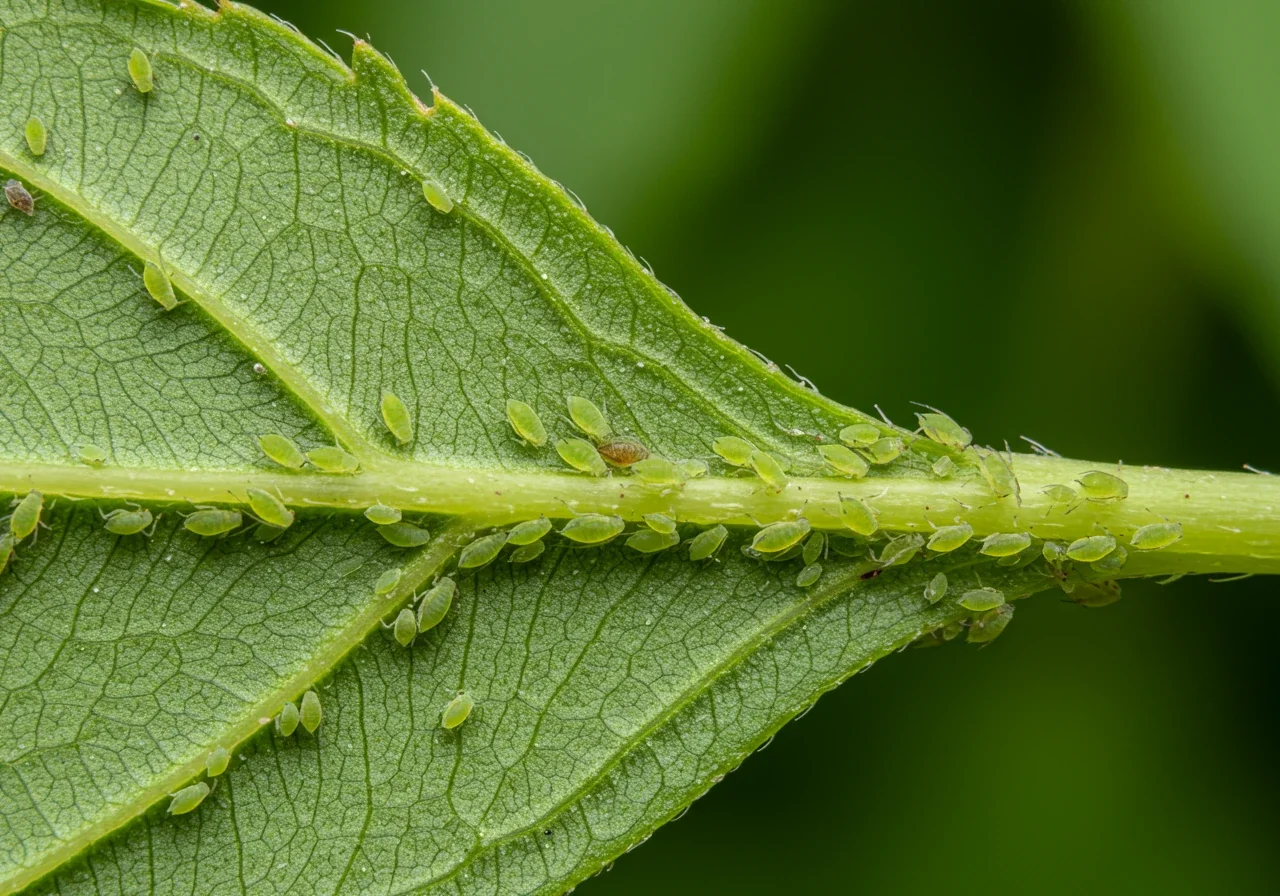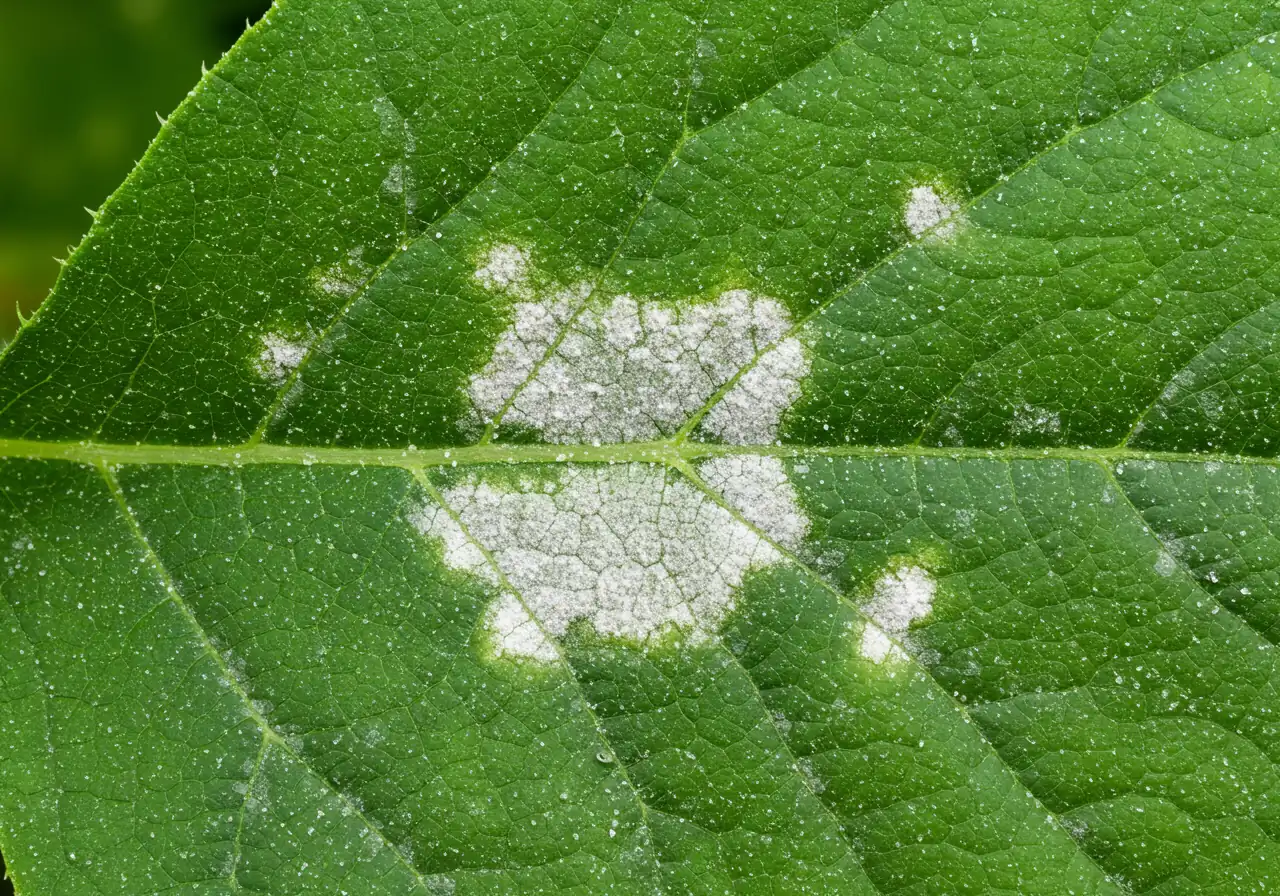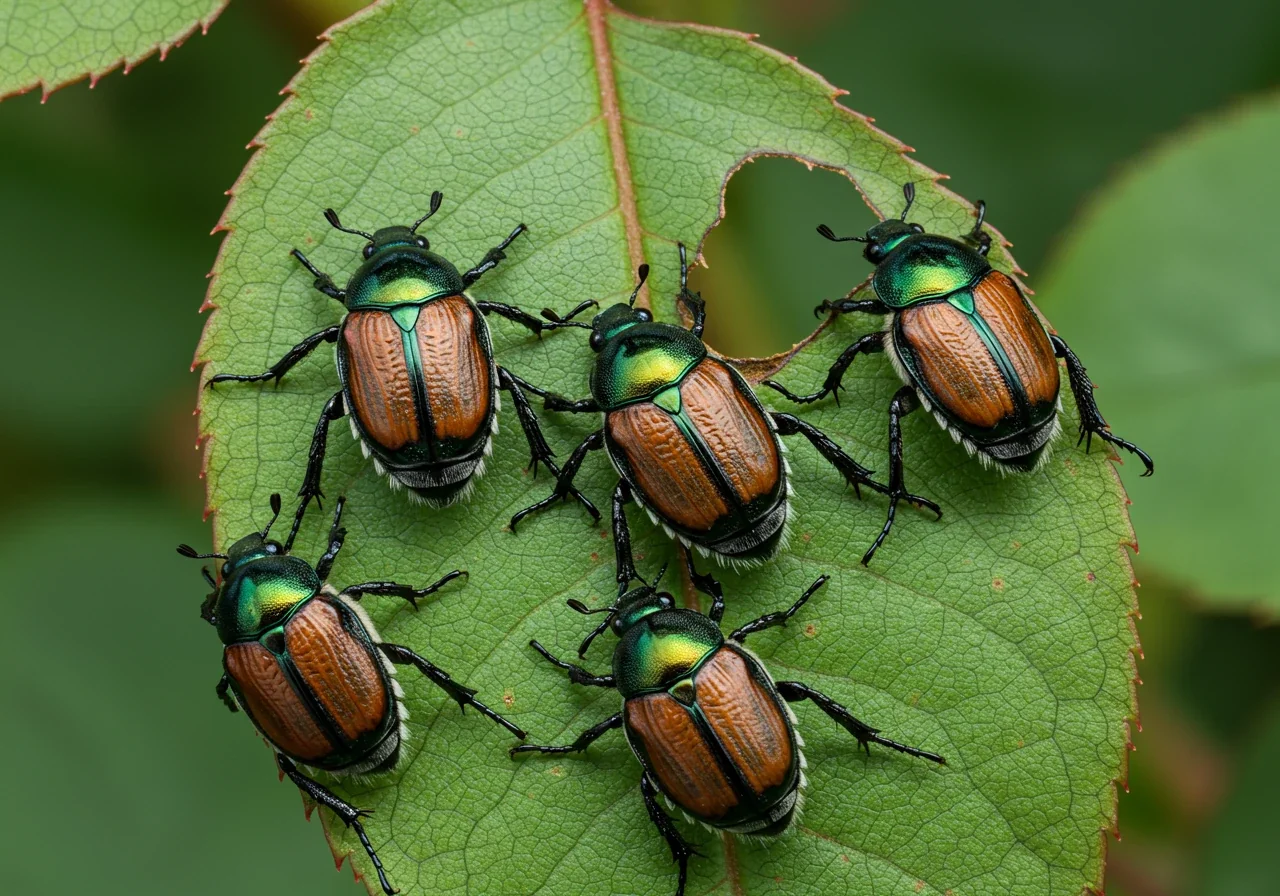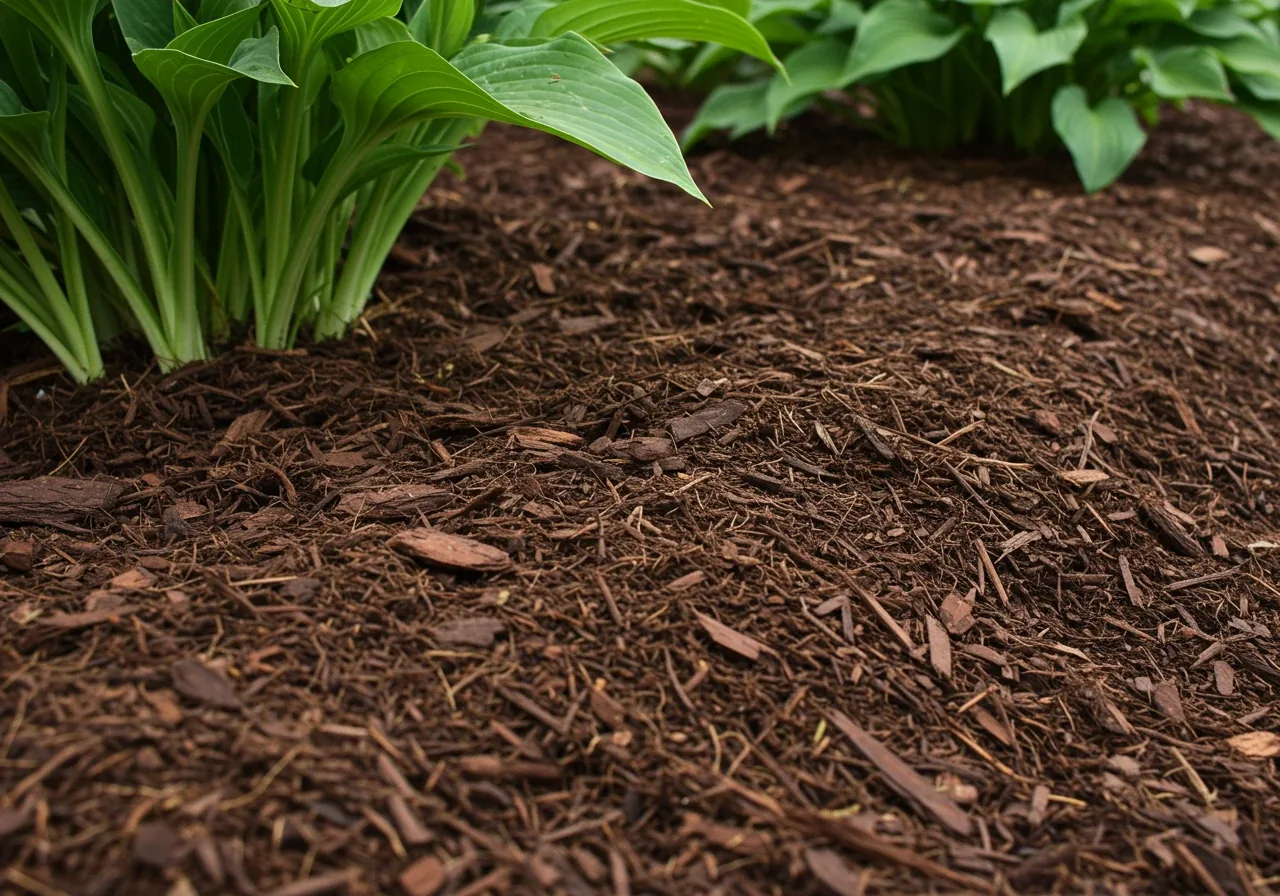Boost Nepean Garden Vigor: Summer Health Assessment Tips
Is your Nepean garden feeling the summer heat? Ensure it stays lush and healthy all season long. Need professional help keeping your garden in top shape? Request a free quote today!
Quick Guide: Summer Garden Check-up
- Perform regular visual inspections (overall health, close-ups).
- Check soil moisture levels before watering (deep, infrequent soaks are best).
- Identify and address common Nepean issues like clay soil challenges, pests (Japanese Beetles, aphids), and diseases (powdery mildew).
- Use mulch effectively to conserve water and suppress weeds.
- Stay vigilant with weeding and deadheading.
- Plan ahead for late summer interest and fall planting.
Introduction: Sun's Out, Spades Out! Keeping Your Nepean Garden Thriving This Summer
Hey there, Nepean neighbours! Summer has definitely arrived in Ottawa, hasn't it? The sun's out, the spades might be *slightly* dusty from spring planting, and it's prime time for enjoying our outdoor spaces. We see some truly beautiful gardens across Nepean, showing off gorgeous landscaping – maybe some inspiration even drifts over from the nearby Experimental Farm or those lovely green pockets near the Rideau River. Seeing those flowers pop and veggies grow is one of the best parts of the season!
But just like us needing a cool drink on a hot day, our gardens need a little mid-summer attention too! Ottawa's signature summer mix of sunshine, heat, and sometimes surprising downpours can put stress on even the hardiest plants and impact your soil health. This isn't about sounding the alarm or suggesting frantic, panic-weeding (we've all been there!). Instead, think of this as a friendly nudge for a mid-season garden check-up. A little *proactive* care now – checking on watering needs, looking out for sneaky pests, and giving your plants some general TLC – goes a long way toward keeping your garden thriving and avoiding bigger headaches down the road. Let’s work together to make sure your Nepean oasis stays lush, lovely, and productive all season long! Regular upkeep is part of comprehensive garden maintenance.
Nepean's Summer Sizzle: Understanding Local Garden Hurdles

Alright, Nepean neighbours, let's chat about summer gardening in our little corner of Ottawa. While we absolutely love soaking up those sunny days, our local summer weather sometimes feels like it’s playing tricks on our poor plants! That glorious heat often brings along humidity thick enough to give even your favourite perennials a bad hair day. This sticky, muggy air isn't just about *our* comfort; it puts real stress on plants and can roll out the welcome mat for unwanted guests like fungal diseases. And don't get us started on the rain lottery – sometimes it feels like weeks between decent showers, leaving soil cracked and plants thirsty, while other times we get torrential downpours that threaten to drown everything, especially in slower-draining spots.
Speaking of drainage, let's dig into our local soil. Much of Nepean, and indeed parts of Ottawa, rests on a foundation of *clay soil*. Now, clay isn't inherently bad – it holds onto water and nutrients like a champ! The downside? It compacts easily (hello, concrete!) and doesn't drain quickly, which can lead to soggy, unhappy roots after those heavy rains. This is precisely why preparing your soil correctly is so important; find out more about effective soil preparation techniques. Work done earlier in the year, like thorough Nepean Spring Lawn Aeration Ottawa, really helps combat that compaction *before* the summer intensity hits. Contrast this with areas potentially leaning towards Greely or parts of Barrhaven, where you might find loamier or even sandier soil. These types drain much better, but they might need more frequent watering and a closer eye on nutrient levels, as water washes them through more quickly. Need help beyond Nepean? We offer Marionville property cleanup services too.
Because we're dealing with this unique Ottawa cocktail – intense heat, unpredictable rainfall, and diverse soil profiles from heavy clay to quicker-draining loam – a one-size-fits-all approach to summer garden care just won't cut it. You really need to become a bit of a detective in your own backyard. Get your hands dirty (literally!). Feel the soil: Is it parched or persistently damp? Observe your plants closely: Are the leaves drooping? Yellowing? Showing spots? Keeping notes on what you see can be surprisingly helpful; this simple Kars Garden Summer Record Keeping Guide offers great tips on tracking your garden's progress and challenges. For more info about our company, check out our Google Business Profile.
Understanding these specific Nepean hurdles is the first step to overcoming them. Maybe you need to amend your clay soil with compost to improve drainage, or perhaps install a shade cloth or strategically plan for structures like those mentioned in these Barrhaven Fall Pergola Ideas Boost Value Ottawa to give sensitive plants a break from the harshest afternoon sun. Success builds on consistent effort, where tackling summer issues complements the foundation laid by work like a comprehensive Barrhaven Commercial Spring Cleanup that clears away old debris and potential problems. If navigating the sizzle and the soil feels overwhelming, remember there are plenty of Landscaping & Gardening Services available to lend a hand, including specialized Metcalf property cleanup. We also respect your privacy, as outlined in our privacy policy.
Your Mid-Summer Garden Physical: A Step-by-Step Assessment Guide
Okay, gardener extraordinaire! Mid-summer in Ottawa means it's time for your garden's check-up – think of it as a "garden physical." Don't worry, no stethoscopes required, just your keen eyes! It's best done during the cooler parts of the day, like morning or evening, so neither you nor your plants get too frazzled by the heat. Grab your favourite gardening gloves, maybe a cool iced tea, and let's play detective in your own backyard!

Here’s your step-by-step guide:
Step 1: The Wide-Angle View
First, just take a slow walk around your entire garden space. How does everything look *overall*? Are plants generally green and looking happy, or are there widespread signs of stress like wilting, yellowing leaves, or bare patches? Are things looking a bit overgrown, or perhaps sparser than you'd like? Make a mental note (or a real one!) of any areas that immediately catch your eye. Sometimes a good overview points you right to a potential issue, like a spot that isn't draining well after a downpour or one corner that gets absolutely scorched by the afternoon sun – something quite noticeable in some of the lovely, spacious Manotick gardens we see. We provide services across the city, including city property cleanup.
Step 2: Plant Close-Ups
Now, let's zoom in for the details. Gently examine individual plants – flowers, veggies, shrubs, the works. Don't forget to peek at the *undersides* of leaves; sneaky pests love hiding out there! Look specifically for:
- Holes or ragged edges on leaves (could be hungry caterpillars or slugs)
- Spots (yellow, brown, or black might indicate fungal issues, common in humid Ottawa summers)
- Sticky residue or fine, silky webs (classic signs of aphids or spider mites)
- Wilting leaves even when the soil feels moist (this could hint at root problems or certain diseases)
Don't panic if you spot something suspicious! Identifying the potential culprit is the crucial first step to fixing it.
Step 3: Digging Deeper (Literally!) - Soil & Moisture Check
Time to get your hands dirty (or use a trowel). Gently poke down a couple of inches into the soil near your plants' roots. How does it feel? Bone dry? Soggy and waterlogged? Ideally, it should feel slightly moist, like a well wrung-out sponge. Consistent moisture is vital during the hot months. Also, check your mulch layer. Is it looking thin or patchy? A good layer of mulch is your garden's best friend for retaining water, keeping weeds down, and regulating soil temperature. Topping it up is one of the best mid-season boosts you can give. Refresh your knowledge with these helpful Mulching and Edging Tips.
Step 4: The Unwanted Guests - Weed & Pest Patrol
Weeds are notorious thieves, stealing water, nutrients, and sunlight from your beloved plants. Gently pull any you find, making sure to get the entire root system so they don't just pop back up next week (the nerve!). Seeing pests? Try simple, gentle solutions first, like a strong spray of water from the hose to dislodge aphids. If you find yourself overwhelmed with clearing out dead or diseased plant matter, or if the weeds have staged a full-on takeover, sometimes calling for backup makes sense. A thorough cleanup can reset the stage. Services like a dedicated Ottawa Property Cleanup Service can tackle these bigger jobs. For homeowners further out, like in the Winchester area, specific help like a Winchester Yard Cleanup Service might be just the ticket.
Step 5: Checking the Support System
Give your plant supports a quick once-over. Are your tomato cages still upright and holding those heavy branches? Are stakes securely supporting tall flowers like delphiniums or sunflowers? Give trellises for beans or cucumbers a gentle wiggle to ensure they're stable. Adjust any ties that might be digging into growing stems.
Performing this quick garden physical every week or two is a fantastic way to catch small issues before they blossom into big problems. It keeps you connected to your garden's rhythm and needs. And hey, if your check-up reveals some areas are consistently struggling, or perhaps you're dreaming of a completely new look or function for a garden bed, maybe it's time to explore options for a new Garden Install. That could be the next exciting chapter for your yard! Remember, consistent observation and care are key to summer gardening success, and don't hesitate to explore the range of Landscaping & Gardening Services available if you need a helping hand, including options like sod installation.
Decoding Distress Signals: Common Nepean Garden Problems & Fixes


Alright, gardeners, let's talk troubleshooting! Even the most beautiful Nepean gardens hit a few bumps in the road, especially during Ottawa's summer rollercoaster. Your plants have ways of telling you something's up – think of it as their own leafy distress signal system. Let's decode some common cries for help and figure out the best fixes, keeping things straightforward and stress-free. For broader property issues, consider our property clean up services.
Problem: Droopy Leaves
Signal: Leaves look sad and limp, even in the morning.
Diagnosis & Fix: Often thirst. Check soil moisture 2 inches down. If dry, water deeply at the roots. If soil is WET and leaves are droopy, it's likely overwatering or poor drainage (common in clay). Allow soil to dry out. Long-term, improve drainage by adding compost.
Problem: Skeletonized Leaves
Signal: Shiny copper/green beetles munching leaves, leaving only veins.
Diagnosis & Fix: Japanese Beetles. Best defense is hand-picking into soapy water early morning. Avoid pheromone traps. Keep garden tidy. For severe infestations needing area cleanup, consider professional help like our City Garden Clean Up Service or for specific areas, Marionville Garden Clean Up Service.
Problem: White Dusty Leaves
Signal: Leaves on squash, phlox, bee balm look dusted with white powder.
Diagnosis & Fix: Powdery Mildew. Improve air circulation (pruning, spacing). Water soil, not leaves. Remove infected leaves immediately (garbage, not compost). Try neem oil or milk spray (1:9 ratio). If widespread, professional removal of diseased material via services like Metcalf Garden Clean Up Service may be needed.
Problem: Yellowing Leaves
Signal: Leaves turning yellow between veins (chlorosis) or pale overall.
Diagnosis & Fix: Likely nutrient deficiency (iron, magnesium, or nitrogen). Check soil pH first. Best long-term fix: add compost regularly. For a quick boost, use appropriate organic fertilizer (worm castings, fish emulsion). Consistent lawn care principles sometimes apply, but garden needs differ.
Problem: Consistently Failing Spots
Signal: Certain garden areas never thrive, regardless of planting.
Diagnosis & Fix: Assess unique challenges: extreme sun, poor drainage, root competition. Choose plants suited to the *actual* conditions (drought-tolerant for sun, moisture-loving for damp). If unresolved, rethink the area: decorative rocks, or a professional Garden Bed Installation and Design tailored to the spot. For larger scale yard issues, look into services like the Marionville Yard Cleanup Service or Metcalf Yard Cleanup Service.
Summer Sustenance: Smart Nutrition & Watering for Ottawa Gardens

Alright, Ottawa gardeners, let's talk about keeping our plants happy campers during the summer heat without constantly running the hose or stressing about fertilizer! Think of this as giving your garden the right food and drink to thrive through the sunny season. It's all about smart strategies, not just more work. Remember to review our terms and conditions for service details.
Watering Wisely: Quench Their Thirst, Don't Drown Them
Forget that quick, surface-level sprinkle every evening – it often encourages shallow roots and wastes water through evaporation. Your garden plants, especially those beauties in your beds, prefer a good, *deep soak* less frequently. The best time? Early morning, before the sun gets high and thirsty itself. This gives the water time to seep down to the roots where it's needed most and lets leaves dry off, reducing disease risk.
How much is enough? Aim to moisten the soil several inches down. The classic finger test works wonders: poke your finger into the soil near your plants. If it feels dry past your first knuckle, it's likely time for a drink.
Want to be a water-saving superstar?
- Mulch is Magic: A 2-3 inch layer of organic mulch (like wood chips, shredded bark, or straw) is your garden's best friend. It helps keep the soil cool, retains moisture like a sponge, and suppresses weeds that compete for water. Choosing the right cover is important; exploring your options for Material Selection can make a big difference.
- Rain Barrel Bonus: Collect that free rainwater! Hooking up a rain barrel to your downspout gives you a supply of chlorine-free water that plants love. It's especially handy for larger properties, perhaps like some you might see out near Metcalfe.
- Check Local Rules: During dry spells, the City of Ottawa might have watering restrictions. It's always good to check their website for the latest guidelines (Tip: Search "City of Ottawa watering restrictions"). Smart watering is a key component of effective Garden Maintenance.
Typical Summer Water Needs (Example)
*Relative water needs during hot, dry summer periods. Always check soil moisture.
Feeding Facts: Less Can Be More
Hold your horses on the fertilizer! While plants need nutrients, over-feeding, especially with synthetic fertilizers, can cause weak, leggy growth that attracts pests and diseases. For many established perennials and shrubs thriving in decent soil, the nutrients already present are often enough.
Compost is your secret weapon! Simply top-dressing your garden beds with a layer of compost once or twice a season adds nutrients slowly, feeds beneficial soil microbes, and improves soil structure – win-win-win!
Heavy feeders, like annual flowers (think petunias) and hungry vegetables (tomatoes, zucchini), will appreciate a mid-season boost. Opt for organic options like worm castings, compost tea, or a balanced fish emulsion, following package instructions carefully. Remember, building healthy soil is the ultimate goal. If you've battled diseases potentially linked to plant stress, clearing out affected material *before* adding amendments is wise. Sometimes a targeted cleanup, like a Metcalf Garden Clean Up Service, can provide a fresh start for specific problem areas. Garden feeding strategies often differ significantly from routine Lawn Care schedules and nutrient needs. For feedback on our estimates, visit estimate feedback.
Special Care for Containers
Keep in mind that plants in pots and containers live in a different world! They dry out *much* faster than plants in the ground because their roots are confined, and the soil is exposed to heat and wind from all sides. Be prepared to water containers daily during hot Ottawa weather, maybe even twice on real scorchers. Nutrients also leach out faster with frequent watering, so container plants usually benefit from more regular feeding – typically a diluted liquid organic fertilizer every 2-4 weeks during the growing season.
If managing watering, feeding, and general tidiness across your entire property feels like too much, remember that comprehensive help like a Metcalf Yard Cleanup Service is available to get things back under control, or a broader city yard cleanup service for urban properties.
By watering deeply, mulching generously, and feeding thoughtfully, you'll provide the perfect summer sustenance for a lush and happy Ottawa garden!
Looking for reliable local resources? Check out the Master Gardeners of Ottawa-Carleton for expert advice or the City of Ottawa's gardening pages for municipal guidelines.
Future-Proofing Your Flora: Prepping for Late Summer & Fall
Okay, green thumbs, let's talk time travel... garden style! Summer in Ottawa is still buzzing, but believe it or not, now is the *perfect* time to start thinking about giving your garden a gentle nudge towards late summer gorgeousness and a smooth transition into fall. A little prep work now means less frantic work later and helps your plants finish the season strong. Think of it as setting the stage for the next beautiful act!
Ongoing: Deadhead Duty
Snip faded flowers from annuals & repeat perennials to encourage more blooms and prevent seed formation.
Weekly: Weed & Water Watch
Stay on top of small weeds. Check soil moisture before watering deeply when needed.
Late Aug/Early Sept: Fall Planting Prep
Plan and purchase fall interest plants like mums, asters, and ornamental grasses. Tidy bed edges.
Late Aug/Early Sept: Spring Bulb Strategy
Order or plan your purchase of spring-blooming bulbs (tulips, daffodils) and decide where they'll go.
Late Aug/Early Sept: Tool Tune-up
Clean, sharpen, and oil garden tools before the main fall cleanup rush.
Keep the Flowers Coming (and Going): Deadheading Duty
Remember those spent flower heads on your petunias, zinnias, marigolds, and even some perennials like coreopsis? Snipping them off (that's "deadheading") does more than just tidy things up. It tells the plant, "Hey, stop putting energy into making seeds and make more flowers instead!" It keeps many annuals blooming right into fall and prevents some perennials from self-seeding everywhere (unless you want that, of course!). Just pinch or snip the faded flower and its stem back to the next set of healthy leaves.
Weed Watch: Stay Vigilant!
Ugh, weeds. They never really take a vacation, do they? Keeping on top of weeding now is crucial. Fewer weeds mean less competition for water and nutrients as your desirable plants prepare for cooler weather. Pull them when they're small, ideally after rain when the soil is soft. Trust us, wrestling with giant, established weeds in September is *way* less fun. Maintaining a weed-free space also makes fall cleanup easier. If the weeds have gotten a bit wild, or you're looking ahead to a larger fall tidy-up across your property, remember that a professional City Yard Clean Up Service can lend a hand.
Plan for Autumn Awesomeness
Late summer is prime planning time for fall interest. Walk around your garden. Are there spots that look a bit bare or blah once the peak summer blooms fade? Consider adding some late-season superstars! Think mums, asters, sedum 'Autumn Joy', ornamental grasses, or late-blooming Rudbeckia. These plants hit their stride when others are winding down, extending your garden's colour show. Planning these additions now lets you prepare the soil or find the perfect spot. You can even start visualizing the change – check out some amazing garden makeovers for inspiration on our Transformations page.
Think Bulbs & Beds
It might feel early, but start dreaming about spring! Late summer is ideal for ordering spring-blooming bulbs (tulips, daffodils, crocuses) online or planning your shopping trip for when they hit the stores. Decide where they'll go – under trees, along borders, in pots? You can also use this time to tidy up bed edges and top up mulch, which helps suppress late-season weeds and conserve moisture. For larger properties, maybe out towards Greely where you have more space, prepping multiple beds can be a bigger task. If bed cleanup and prep feel overwhelming as fall approaches, a dedicated Ottawa Garden Clean Up Service can be a lifesaver.
Tool Time: A Stitch in Time Saves Nine
Before the big fall leaf invasion and final garden clear-out, show your tools some love. Clean off dried mud from spades and trowels. Sharpen the blades on your pruners and shears – clean cuts are healthier for plants! Give metal parts a light wipe with an oiled rag to prevent rust. Doing this now means your tools are ready when you need them most. At Clean Yards, we believe proactive care makes all the difference – it's a core part of who we are, as you can learn more About Us.
By tackling these simple steps now, you're not just tidying up; you're actively future-proofing your garden for a spectacular late summer show and an easier slide into autumn. Happy prepping!
Quick Summer Wins for a Happy Nepean Garden
Feeling the summer heat and wondering how to give your garden a quick boost without breaking your back (or the water bank)? Here are a few easy wins to keep your Nepean landscape looking sharp and feeling happy:
- Water Smart, Not Hard: Ditch the daily quick sprinkle! Instead, give your garden beds a *deep soak* early in the morning, maybe 2-3 times a week when it's dry. Always do the finger test first – poke down a couple of inches. If it's damp, hold off! Soggy roots are unhappy roots, especially in the clay soil common around Ottawa. Good drainage relies on good groundwork; remember the value of thorough Soil Preparation Strategies.
- Mulch: Your Garden's Best Pal: Check your mulch depth! Aim for a cozy 2-3 inch blanket around your plants (but not piled right against stems). Is it looking thin or patchy? Top it up! This simple step keeps roots cool, holds precious moisture, and smothers annoying weeds. While applying mulch is straightforward, it's always smart for any bigger landscaping jobs to review the service details, like those outlined in clear Landscaping Terms and Conditions for total clarity.
- Speedy Weed & Pest Scan: Become a garden detective for 10 minutes! Stroll through and yank any small weeds *before* they settle in. Peek under leaves for common pests like aphids or those shiny Japanese Beetles (early morning soapy water bath for them!). Catching issues early prevents bigger headaches later. If things *do* get overwhelming and professional help seems needed, checking Customer Feedback on Cleanup Estimates can be a helpful step in making your decision.
- Snip for More Blooms & Tidiness: Got faded flowers on your annuals (like petunias or marigolds) or repeat-blooming perennials? Give them a quick snip! Deadheading tells the plant to make more flowers, not seeds, and instantly tidies things up. It's a super quick fix that keeps the colour coming and contributes to a lovely garden picture, maybe even inspiring bigger Garden Makeover Ideas for next season!
- Tidy Up Troublespots: Notice a corner collecting spent leaves, fallen petals, or early casualties of summer stress? Do a quick clear-out. Removing debris promptly helps prevent diseases and pests from finding a cozy home. Don't let small messes snowball into needing a full Ottawa Property Clean Up – stay ahead of the game!
Nepean Garden FAQs: Your Summer Questions Answered
Got questions about keeping your Nepean garden gorgeous during the sunny season? You're not alone! Here are some common head-scratchers we hear, along with quick, helpful answers.
Ah, classic Ottawa clay! The key is deep, infrequent watering. Let the hose run slowly at the base of plants until the water penetrates several inches down (use a trowel to check!). Avoid frequent shallow sprinkles. This encourages deeper roots. Adding compost consistently over time is the *best* long-term fix to improve drainage and texture.
Ditch the rigid schedule and let the soil tell you! Poke your finger down 2 inches near the plant roots. If it feels dry, water deeply. If it's damp, wait. Early morning is the best time. Established perennials might only need a deep soak once or twice a week in dry spells, while annuals and containers need more frequent checks.
Aphids (tiny green or black bugs on new growth) and slugs (leaving slimy trails, especially after rain) are common summer nuisances. A strong spray of water can dislodge aphids. For slugs, try beer traps or iron phosphate bait. If pests or resulting damage get really bad, a comprehensive Ottawa yard cleanup service can help clear out debris and problem areas.
Little and often is the secret! Aim for a quick 15-minute weed patrol 2-3 times a week rather than a huge weekend battle. Pulling weeds when they're small is much easier and stops them from stealing resources. If keeping up feels impossible, consider help from a professional city garden maintenance service to stay on top of things.
First, carefully prune any broken branches cleanly back to the main stem or a healthy bud. Gently try to stake up flattened perennials like delphiniums or sunflowers – they might recover! Clear away fallen debris promptly to prevent disease. For significant damage across your yard, an Ottawa Property Clean Up can handle the heavy lifting and disposal safely.
Not necessarily! Garden centres often have robust annuals like mums, pansies (for later), or ornamental grasses ready for fall interest. You could also pop in some fast-growing annuals for a quick burst, but manage expectations. For advice tailored to your specific spot, feel free to ask us for a consultation; after you inquire, we're always pleased to say Thank you for reaching out!
Conclusion: Keep Your Nepean Garden Glowing All Season Long
Whew! We've dug through quite a bit, haven't we? Keeping your Nepean garden looking its best during Ottawa's vibrant summer doesn't have to feel like wrestling a zucchini vine in July (we've all been there!). It really boils down to paying a little attention. Smart watering that suits our sometimes-fickle weather and clay-ish soil, keeping an eagle eye out for common pests *before* they throw a party, giving your plants the right fuel, and even thinking a step ahead to late summer blooms and fall prep – these simple actions make a *huge* difference. Think of it as teamwork between you and your plants!
A little proactive care truly goes a long way, ensuring your slice of Nepean paradise stays healthy, beautiful, and enjoyable right through the season. It means less stress for you and more time simply soaking up the sunshine in your gorgeous outdoor space.
Feeling inspired to learn even more tricks of the trade? Dive deeper into our website for more landscaping tips and gardening resources tailored for Ottawa homeowners! And hey, if life gets busy or you’d rather leave the weeding and maintenance to the pros, remember we offer friendly, reliable landscaping and gardening services right here in Nepean and surrounding communities like Manotick and Osgoode. Don't hesitate to reach out!
Happy gardening, neighbours – keep those green spaces glowing!

